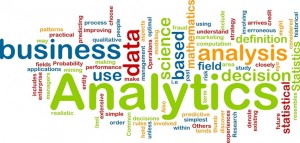
Following are the key categories of analytics which are described later in this article:
- Descriptive Analytics
- Predictive Analytics
- Prescriptive Analytics
What is Descriptive Analytics?
Descriptive analytics answers the question or gains insights into or summarize, “What has happened?”. This could be seen as first stage of business analytics and still accounts for the majority of all business analytics today. Business intelligence (BI) and data mining techniques are commonly used to achieve the results of descriptive analytics. Descriptive analytics is most commonly done using some of the following techniques/methods: reports, scorecards, dashboards. There are various BI tools which helps one to create nice reports or dashboard.
Following are some of the examples of descriptive analytics reports:
- Which are the best-seller products?
- Which are the most or least revenue generating products?
- Which are the most successful promotional campaigns?
- Who are the most paying customers?
- Which is the revenue trend of last N years, last N months?
- What are revenue trends for each SBU?
In my recent experience, a client wanted to understand what kind of analytics would help him to take smarter decisions for profitable business across different line of businesses (LOB). He had large datasets but no idea on what kind of analytics should be done using these datasets? Should it be descriptive analytics or usual BI, predictive analytics or prescriptive analytics. And, the Big Data hype and Data Analytics possibilities left him wondering if one of the existing ETL/BI tools would just be sufficient to create analytics infrastructure that could suffice requirements of all form of analytics. Or, whether he would be needed to explore Big Data technologies. Looking at different types of analytics as listed in this article, it could be said that he would be benefitted by all forms of analytics including descriptive, predictive and prescriptive analytics. That said, he might want to start with descriptive analytics first. However, the choice of tools & technologies (Big Data related) should be appropriate enough to support different form of analytics in time to come.
To summarize, descriptive analytics helps us achieve some of the following:
- Standard reporting on “what has happened?”
- Query/drill down to identify the problem areas
- Ad hoc reporting related with counts such as how many, how often etc.
What is Predictive Analytics?
Predictive analytics helps one to understand, “What is likely to happen in future?”. Make no mistakes in understanding that predictive analytics in no way tells with certainty, as to what will happen, for sure, in future? All it tells is “What is likelihood of something happening in future?”. This is primarily because predictive analytics is probabilistic in nature. Statistical modeling and machine learning techniques form key to predictive analytics thereby helping in understanding probable future outcomes.
In one other article, I liked the analogy of “ARE” vs “WILL BE” for understanding descriptive vs predictive analytics. But the caution has to be taken to understand that “WILL BE” represents LIKELIHOOD rather than certainty.
Following are some examples of predictive analytics reports based on above examples under descriptive statistics. Notice the usage of word, “LIKELY”.
- Numeric Prediction (Regression)
- What is going to be likely revenue for coming year?
- What is going to be likely revenue for each SBU in coming year?
- What is going to be likely attrition rate for the coming year?
- Class Prediction (Classification)
- Who all customers are likely to churn-out?
- Which promotional campaigns are likely to do well?
- Segment Prediction (Clustering)
- Which products are likely to sell most in this year or next six months?
In general, predictive analytics cater to following classes of prolbems:
- Numbers related prediction where prediction related to numbers are made. For example, housing price, stock price etc.
- Classification related prediction where prediction related with binary outcomes or discreet outcomes are made. For example, whether a person is suffering from a disease, or whether country X will win the game or whether customer X will churn out or not, etc.
- Segmentation problem related with grouping similar thing together and provide them a label.
- Recommendations where predictions are made for similar products likely to be bought by the user or similar movies likely to be favorited by the users etc.
- Link prediction problem in case of social networking websites
To summarize, predictive analytics helps us achieve some of the following:
- Predictive modeling on “what is likely to happen?”
- Forecasting based on what is likely to happen as a trend.
- Simulation related with what could probably happen?
What is Prescriptive Analytics?
As per wikipedia page, Prescriptive analytics automatically synthesizes big data, multiple disciplines of mathematical sciences and computational sciences, and business rules, to make predictions and then suggests decision options to take advantage of the predictions.
Prescriptive Analytics answer the question such as “What should be done?”. In simpler words, prescriptive analytics advices on best possible option/outcome to handle a future scenario. It explores a set of possible actions using various optimization and mathematical models and, suggests actions based on descriptive and predictive analyses of complex data. It makes use of a combination of techniques and tools such as business rules, algorithms, machine learning and computational modelling procedures.
Following are some of the examples of prescriptive analytics:
- Appropriate pricing of a product at any given point of time in the year
- In case of Oil and Gas exploration, prescriptive analytics could help to decide on how and where to drill, complete, and produce wells in order to optimize recovery, minimize cost, and reduce environmental footprint.
- Coefficient of Variation in Regression Modelling: Example - November 9, 2025
- Chunking Strategies for RAG with Examples - November 2, 2025
- RAG Pipeline: 6 Steps for Creating Naive RAG App - November 1, 2025
I found it very helpful. However the differences are not too understandable for me